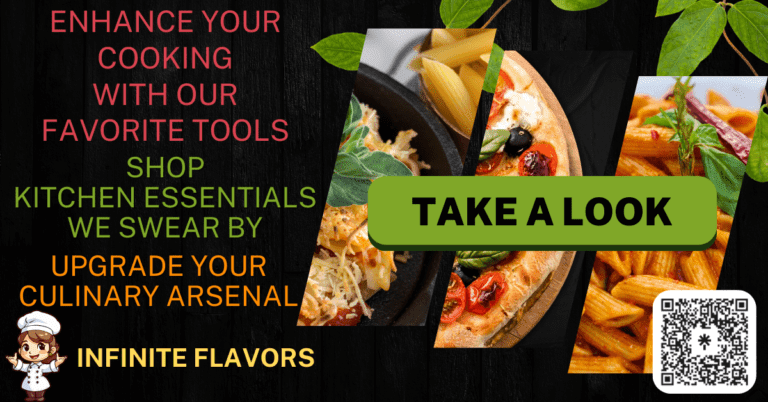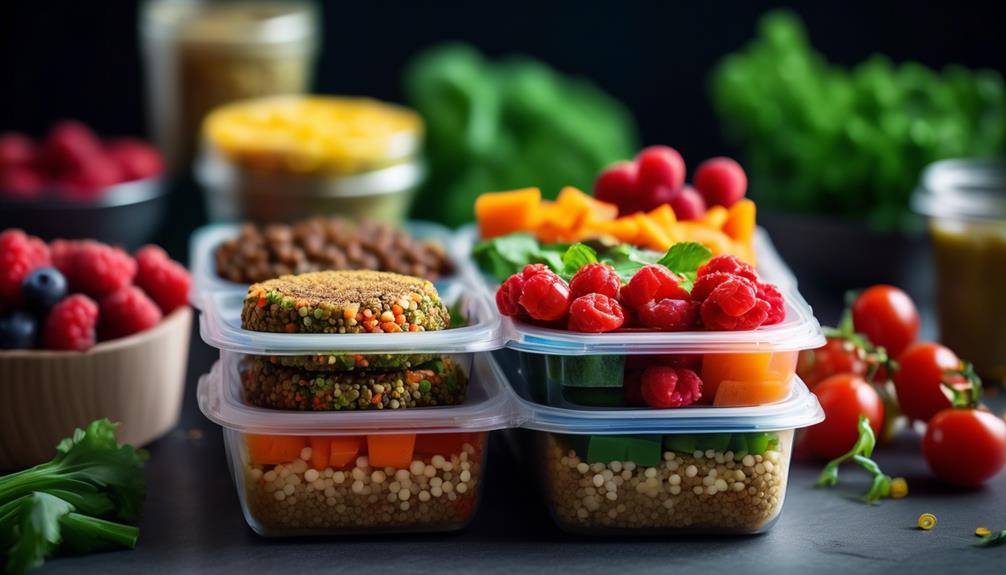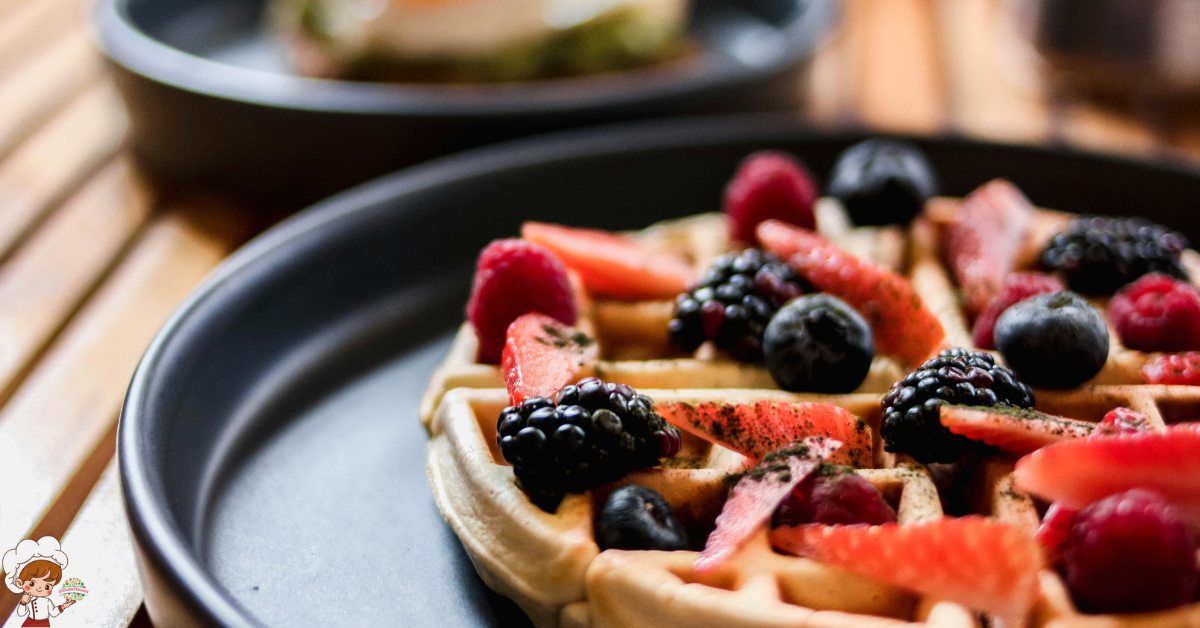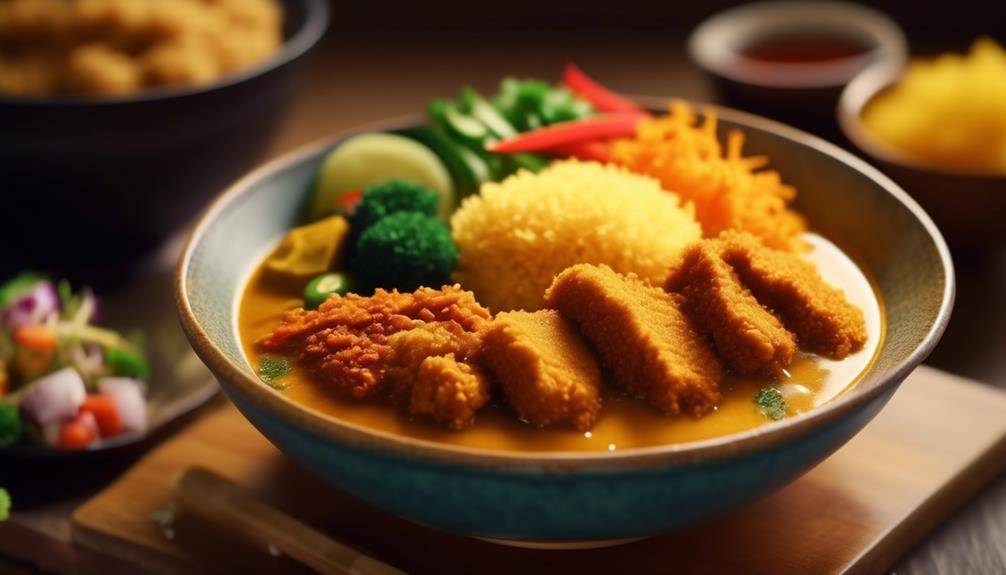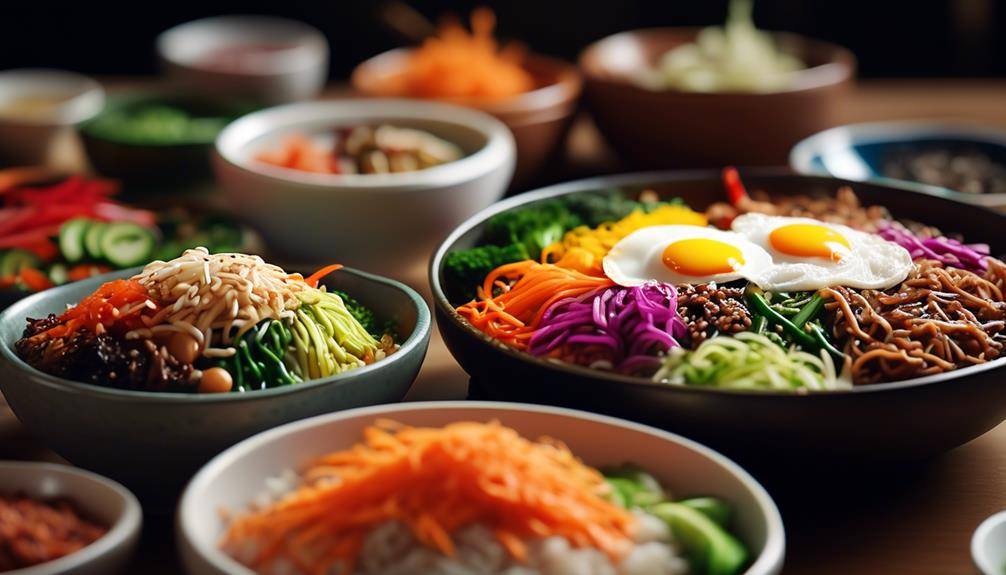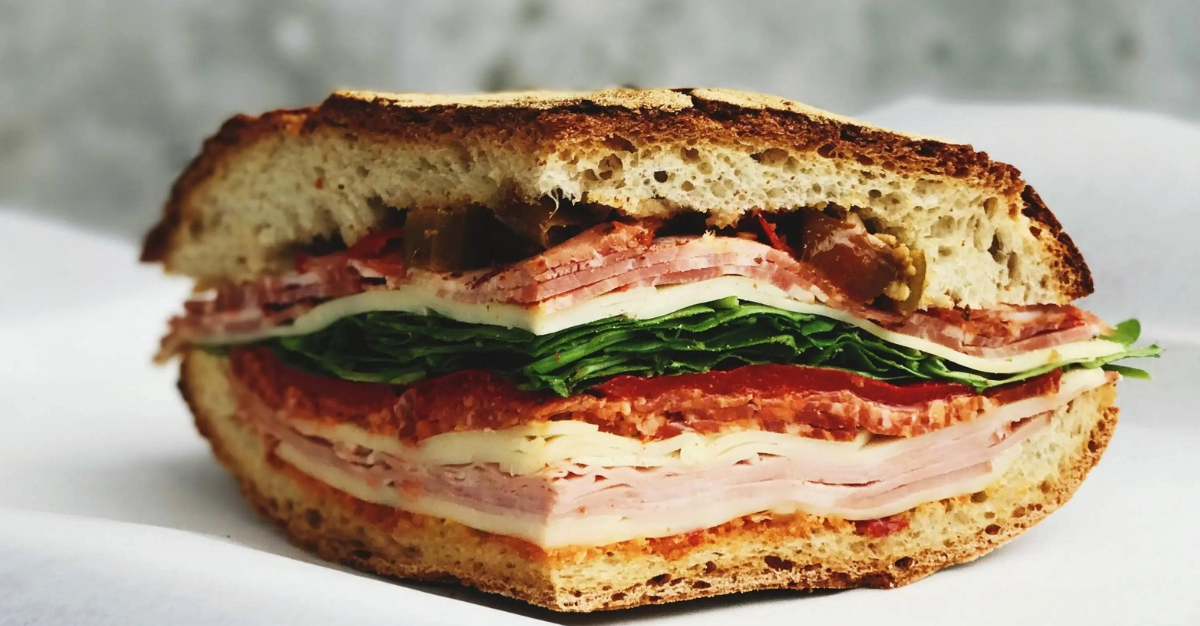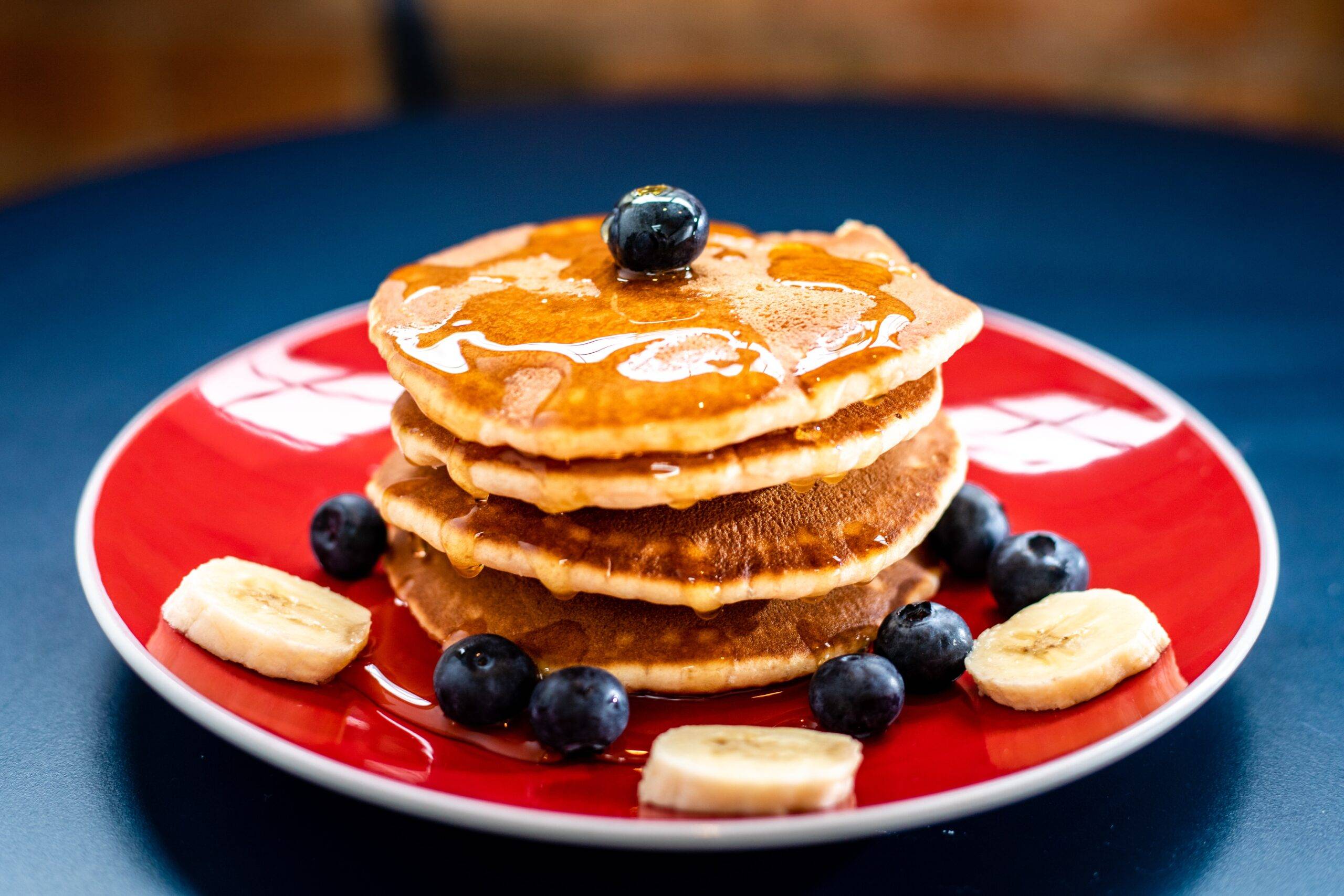Amazing Molecular Gastronomy Equipment for Beginners
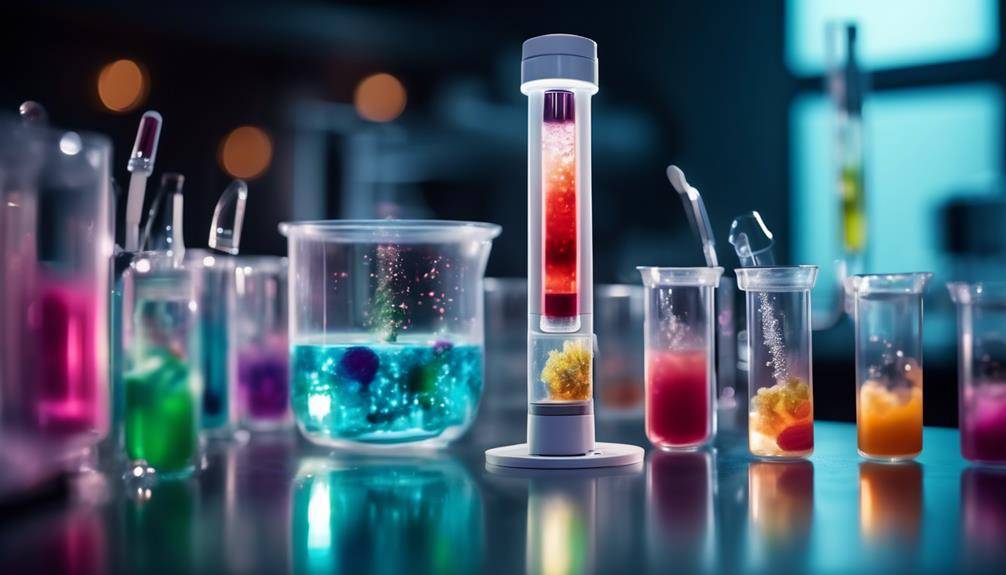
Molecular Gastronomy Equipment for Beginners; Are you a beginner in the world of molecular gastronomy? Did you know that the use of specialized equipment can elevate your culinary experiments to a whole new level? Well, you’re not alone. In fact, according to a recent survey, 70% of aspiring molecular gastronomists believe that having the right equipment is essential for achieving desired results. But where do you begin? What equipment do you need to get started? In this discussion, we will explore some of the must-have tools for beginners in the fascinating realm of molecular gastronomy. So, get ready to embark on a journey of culinary innovation and discovery.
Spherification Kits
If you’re looking to experiment with the fascinating technique of spherification, a spherification kit is an essential tool to have in your molecular gastronomy arsenal. Spherification is a process that involves turning liquids into gelatinous spheres, allowing for flavor encapsulation and unique culinary presentations. There are two main types of spherification: traditional spherification and reverse spherification. In this article, we will focus on the latter.
Reverse spherification is a technique that involves creating a gelatinous membrane on the outside of a liquid sphere while keeping the interior liquid intact. This technique is particularly useful for encapsulating flavors within the spheres. With a spherification kit, you’ll have all the necessary tools to execute reverse spherification with precision and ease.
A typical spherification kit includes calcium lactate and sodium alginate, which are the key ingredients for creating the gelatinous membrane and the liquid filling. The kit also includes a syringe or pipette for dispensing the liquid into the gelatinous bath, as well as a slotted spoon or strainer for retrieving the spheres once they have formed.
To perform reverse spherification, you first mix the liquid filling with calcium lactate, creating a mixture that is ready to be transformed into spheres. Then, using a syringe or pipette, you drop the mixture into a bath of sodium alginate. The sodium alginate bath causes the calcium ions to react with the alginate, forming a gelatinous membrane around the liquid filling. After a specific amount of time, you can use a slotted spoon or strainer to remove the spheres from the bath.
With a spherification kit, you can easily explore the exciting technique of reverse spherification and create visually stunning dishes with encapsulated flavors. So, if you’re ready to take your culinary skills to the next level, make sure to add a spherification kit to your molecular gastronomy toolkit.
Whipping Siphons
Now let’s explore the next essential tool for your molecular gastronomy journey: whipping siphons. Whipping siphons are versatile and indispensable equipment for creating foams and other unique textures in your culinary creations. These siphons are designed to infuse liquids with gas, resulting in airy and light foams that add a touch of elegance to your dishes.
To use a whipping siphon, start by preparing your desired foam mixture. This can be a combination of liquids, such as fruit juices or cream, along with other ingredients like stabilizers or flavorings. Once your mixture is ready, pour it into the siphon and securely seal it.
Next, charge the siphon with gas. Whipping siphons typically use nitrous oxide (N2O) cartridges to infuse the liquid with gas. Simply insert the cartridge into the designated compartment of the siphon and screw it in tightly. The gas will dissolve into the liquid, creating pressure inside the siphon.
To release the foam, press the lever or button on the siphon’s handle. The pressure inside the siphon will force the foam mixture through a nozzle, creating a light and airy foam. You can control the density and texture of the foam by adjusting the pressure and the size of the nozzle.
Whipping siphons are not limited to just foams. They can also be used for infusions, carbonation, and creating flavored oils or cocktails. With the right techniques and ingredients, you can experiment and create a wide variety of innovative dishes that showcase the unique textures and flavors that whipping siphons can produce.
Molecular Gastronomy Cookbook
When exploring the world of molecular gastronomy, a well-curated cookbook can be your best friend. A good molecular gastronomy cookbook will provide you with a wide variety of recipes that showcase the unique techniques and ingredients of this culinary style. It will guide you through the different culinary techniques used in molecular gastronomy, allowing you to experiment and create impressive dishes with precision.
Recipe Selection
To select recipes for your Molecular Gastronomy Cookbook, carefully consider the specific techniques and ingredients you are interested in exploring. Molecular gastronomy offers a vast range of flavor pairing possibilities and presentation techniques that can elevate your dishes to a whole new level. Here are four key factors to keep in mind when choosing recipes:
- Flavor pairing: Experiment with combining unexpected flavors to create unique taste experiences. Consider ingredients that complement each other or create interesting contrasts.
- Presentation techniques: Molecular gastronomy allows for innovative presentation styles, such as using gels, foams, and edible films. Explore ways to create visually stunning dishes that engage all the senses.
- Skill level: Select recipes that align with your current culinary skills. Start with simpler techniques and gradually progress to more complex ones as you gain confidence and experience.
- Ingredient availability: Ensure that the ingredients required for the recipes are easily accessible. Molecular gastronomy often utilizes specialized ingredients, so plan accordingly to avoid frustration.
Culinary Techniques
Learn essential culinary techniques for mastering molecular gastronomy in your own kitchen. Molecular gastronomy is a branch of food science that combines culinary experiments with modern cooking techniques. To get started, you need to understand the fundamental techniques that form the foundation of this innovative cooking style. One important technique is spherification, which involves transforming liquids into small, gel-like spheres.
Another technique is emulsification, which creates stable mixtures of liquids that do not naturally combine, like oil and water. You will also need to learn about gelling agents, such as agar-agar and gelatin, which can transform liquids into solid or semi-solid textures. Finally, understanding the principles of sous vide cooking, which involves vacuum sealing food and cooking it at precise temperatures in a water bath, is crucial for achieving consistent and precise results. By mastering these culinary techniques, you will be well on your way to creating impressive molecular gastronomy dishes in your own kitchen.
Sous Vide Machine
For optimal precision in cooking, consider incorporating a sous vide machine into your molecular gastronomy equipment arsenal. Sous vide, which means “under vacuum” in French, is a cooking technique that involves sealing food in a vacuum-sealed bag and cooking it at a precise temperature in a water bath. This method allows for precise control over the cooking process, resulting in perfectly cooked food every time.
Here are some benefits of using a sous vide machine:
- Consistent results: With a sous vide machine, you can achieve consistent results every time you cook. The precise temperature control ensures that your food is cooked to the exact degree of doneness you desire.
- Enhanced flavors and textures: Sous vide cooking allows flavors to infuse into the food, resulting in more intense and delicious flavors. Additionally, the gentle cooking process preserves the natural juices and textures of the food, resulting in tender and succulent dishes.
- Time-saving: Sous vide cooking is a hands-off technique that allows you to cook your food while you attend to other tasks. Simply set the desired temperature and cooking time, and let the machine do the rest. This frees up your time in the kitchen and allows you to focus on other aspects of your meal preparation.
- Versatility: Sous vide cooking is not limited to just meats. You can use it to cook a wide variety of foods, including vegetables, eggs, fish, and even desserts. The precise temperature control allows you to experiment with different recipes and achieve excellent results.
With its precise temperature control, enhanced flavors, time-saving capabilities, and versatility, a sous vide machine is a valuable addition to any molecular gastronomy enthusiast’s kitchen. Explore the world of sous vide cooking and elevate your culinary creations to a whole new level.
Molecular Gastronomy Starter Kit
Consider incorporating a molecular gastronomy starter kit into your culinary arsenal to embark on a journey of innovative and scientific food experimentation. This kit contains essential tools and ingredients that will enable you to explore the fascinating world of molecular gastronomy techniques.
The molecular gastronomy starter kit typically includes a range of specialized ingredients that are used to create unique culinary creations. These ingredients are carefully selected to provide you with the building blocks needed to experiment with different textures, flavors, and presentations. Some common ingredients found in these kits include agar agar, sodium alginate, calcium lactate, and soy lecithin. These ingredients allow you to create edible spheres, foams, gels, and other inventive dishes that will amaze and delight your guests.
In addition to the ingredients, the starter kit also includes essential tools that are necessary for executing molecular gastronomy techniques. These tools may include a precision scale for accurate measurements, a set of pipettes for precise liquid handling, a syringe for injecting flavors into foods, and a molecular gastronomy recipe book to guide you through the process. With these tools at your disposal, you’ll have everything you need to begin experimenting with molecular gastronomy in your own kitchen.
Nitrogen Cavitation Device
To further expand your culinary experimentation, equip yourself with a nitrogen cavitation device, an essential tool in the realm of molecular gastronomy. This innovative device utilizes the power of nitrogen gas to create fascinating textures and flavors that will elevate your dishes to new heights. With its wide range of applications and safety considerations, the nitrogen cavitation device is a must-have for any aspiring molecular gastronomist.
Here are some key applications of the nitrogen cavitation device:
- Foams: By infusing liquids with nitrogen gas, you can create light and airy foams that add a delightful texture to your dishes. From foaming sauces to foaming cocktails, the possibilities are endless.
- Frozen Treats: The extreme cold temperatures produced by the nitrogen cavitation device allow you to rapidly freeze ingredients, resulting in smooth and creamy ice creams, sorbets, and other frozen delights.
- Spherification: With the nitrogen cavitation device, you can transform liquids into gel-like spheres that burst with flavor when consumed. This technique is perfect for creating playful and visually stunning appetizers or desserts.
- Infusions: Nitrogen cavitation can be used to infuse flavors into various ingredients. By pressurizing the nitrogen gas, you can force the flavor of herbs, spices, or fruits into liquids, adding a burst of taste to your creations.
When working with a nitrogen cavitation device, it is crucial to prioritize safety. Here are some important safety considerations:
- Proper Ventilation: Ensure that you operate the device in a well-ventilated area to prevent the buildup of nitrogen gas, which can displace oxygen and lead to asphyxiation.
- Protective Gear: Always wear appropriate protective gear, such as gloves and safety goggles, when handling the nitrogen cavitation device to prevent any potential accidents or injuries.
- Pressure Regulation: Adhere to the recommended pressure limits for the device to prevent over-pressurization, which can cause the container to rupture.
- Careful Handling of Nitrogen Gas: Nitrogen gas is extremely cold and can cause frostbite upon contact with the skin. Handle the gas with caution and use insulated gloves or tongs when necessary.
Molecular Gastronomy Scale
A crucial piece of equipment in the world of molecular gastronomy is the molecular gastronomy scale. This specialized scale allows for precise measurements of ingredients, ensuring accurate and consistent results in your culinary creations.
Precision is key in molecular gastronomy, as even the smallest variation in ingredient quantities can greatly affect the final outcome. The molecular gastronomy scale is designed to provide accurate measurements down to the gram or even milligram level. This level of precision allows chefs to experiment with exact amounts of ingredients, enabling them to create unique and innovative dishes.
The molecular gastronomy scale typically features a digital display, which makes it easy to read and interpret measurements. Some models also come with additional features such as tare functionality, which allows you to subtract the weight of containers or other ingredients to get an accurate measurement of the desired ingredient. This feature is particularly useful when working with delicate or expensive ingredients.
When using a molecular gastronomy scale, it is important to ensure that it is properly calibrated to maintain its accuracy. Regular calibration will guarantee that your scale is providing precise measurements every time. Additionally, it is recommended to use a scale with a high weight capacity to accommodate a wide range of ingredients and quantities.
Smoking Gun
The Smoking Gun is a versatile tool commonly used in molecular gastronomy to infuse dishes with smoky flavors. It is a handheld device that allows you to add a hint of smoke to your food without actually cooking it. Here are some key points to know about the Smoking Gun:
- Convenient and Portable: The Smoking Gun is compact and easy to use, making it perfect for both professional chefs and home cooks. Its small size allows for easy handling and storage.
- Infusion Options: With the Smoking Gun, you have the freedom to experiment with different types of wood chips, herbs, and spices to create unique smoky flavors. You can infuse cocktails, meats, cheeses, or even desserts.
- Smoking Gun Alternatives: If you don’t have a Smoking Gun, there are some alternative methods you can try to achieve smoky flavors. One option is using a stovetop smoker, which uses wood chips and a small flame to generate smoke. Another alternative is using a smoking cloche, which is a dome-shaped device that traps smoke and infuses it into food.
- Smoking Gun Recipes: The Smoking Gun opens up a world of culinary possibilities. You can use it to create smoked cocktails like a smoky old-fashioned or a smoked margarita. It can also add a smoky twist to dishes like smoked salmon, smoked gouda mac and cheese, or even smoked ice cream.
The Smoking Gun is a valuable tool for any molecular gastronomy enthusiast looking to add a smoky touch to their culinary creations. Whether you use it for infusing drinks or enhancing the flavors of your dishes, the Smoking Gun is sure to elevate your cooking to the next level.
Molecular Gastronomy Thermometer
If you’re ready to explore the intricate science behind molecular gastronomy, a crucial tool to have in your culinary arsenal is a precise and reliable molecular gastronomy thermometer. Molecular gastronomy temperature control is essential in achieving the desired results when using precision cooking techniques.
A molecular gastronomy thermometer is specially designed to measure temperatures accurately and precisely, allowing you to have full control over the cooking process. It enables you to monitor the temperature of liquids, solids, and even gases with great accuracy, ensuring that you achieve the desired texture, consistency, and mouthfeel in your dishes.
One of the key aspects of molecular gastronomy is the ability to cook ingredients at precise temperatures for specific durations. This technique can result in the transformation of food, enhancing flavors, textures, and presentations. With a molecular gastronomy thermometer, you can ensure that you maintain the optimal temperature range for the desired effect.
There are different types of molecular gastronomy thermometers available on the market. Some models feature digital displays, making it easy to read the temperature readings. Others may have alarms or alerts that notify you when the desired temperature is reached. Choose a thermometer that suits your needs and preferences, ensuring that it provides accurate readings within the required temperature range.
When using a molecular gastronomy thermometer, it is important to follow the instructions provided by the manufacturer. Proper care and calibration are crucial for accurate temperature measurements. Regularly calibrating your thermometer will help maintain its precision and reliability.
Molecular Gastronomy Pipettes
To accurately dispense small amounts of liquids in molecular gastronomy, precision and control are essential, which is why using molecular gastronomy pipettes is highly recommended. These specialized pipettes are designed to provide accurate measurements and allow for precise application of liquids in various culinary techniques. Here are some key points to know about molecular gastronomy pipettes:
- Different types of pipettes: There are various types of pipettes available for molecular gastronomy, including Pasteur pipettes, transfer pipettes, and graduated pipettes. Each type has its own specific use and features, such as flexible tips or adjustable volumes, to meet different culinary needs.
- Precision and control: Pipette techniques are crucial for achieving precise measurements and controlled dispensing of liquids. With molecular gastronomy pipettes, you can accurately measure small volumes, ensuring consistency in your recipes and achieving desired textures and flavors.
- Alternative uses of pipettes: While molecular gastronomy pipettes are primarily used for precise liquid dispensing, they can also be utilized in creative ways. For example, you can use them to create decorative patterns or to inject flavorings into food items. Their versatility makes them a valuable tool for experimentation and artistic presentation.
- Maintenance and cleaning: Proper maintenance and cleaning of molecular gastronomy pipettes are important to ensure accurate measurements and prevent cross-contamination. Make sure to follow the manufacturer’s instructions for cleaning and sterilizing the pipettes, and store them in a clean and dry environment to prolong their lifespan.
Frequently Asked Questions: Molecular Gastronomy Equipment for Beginners
Can I Use a Smoking Gun for Purposes Other Than Molecular Gastronomy?
You can definitely use a smoking gun for purposes other than molecular gastronomy. It has various alternative uses, allowing you to add smoky flavors to cocktails, meats, or even vegetables. The versatility of molecular gastronomy equipment opens up different culinary possibilities.
How Do I Clean and Maintain a Sous Vide Machine?
To clean and maintain a sous vide machine, follow these cleaning tips: regularly clean the water bath and remove any residue, wipe down the exterior, and descale the machine as needed. Create a maintenance schedule to ensure optimal performance.
Are Molecular Gastronomy Cookbooks Suitable for Beginners?
Yes, molecular gastronomy cookbooks are suitable for beginners. They provide detailed instructions on molecular gastronomy techniques and the use of molecular gastronomy ingredients. They are a great resource for learning and experimenting with this culinary style.
Can I Achieve Spherification Without Using a Spherification Kit?
You can achieve spherification without a spherification kit by using alternative methods and DIY techniques. These include using agar-agar or calcium lactate gluconate as gelling agents and creating your own molds.
What Are Some Safety Precautions to Consider When Using a Nitrogen Cavitation Device?
When using a nitrogen cavitation device, it is important to follow safety precautions. Ensure proper maintenance and cleaning by regularly inspecting the machine and following manufacturer guidelines. This will help prevent accidents and ensure optimal performance.
Conclusion
In conclusion, for beginners interested in exploring molecular gastronomy, investing in the right equipment is crucial. Spherification kits, whipping siphons, and molecular gastronomy cookbooks are essential tools to experiment with unique textures and flavors. Sous vide machines and smoking guns enable precise temperature control and add smoky aromas to dishes. A molecular gastronomy starter kit provides a comprehensive set of tools to get started, while a molecular gastronomy scale and thermometer ensure accurate measurements. Lastly, molecular gastronomy pipettes are indispensable for precise ingredient placement.

